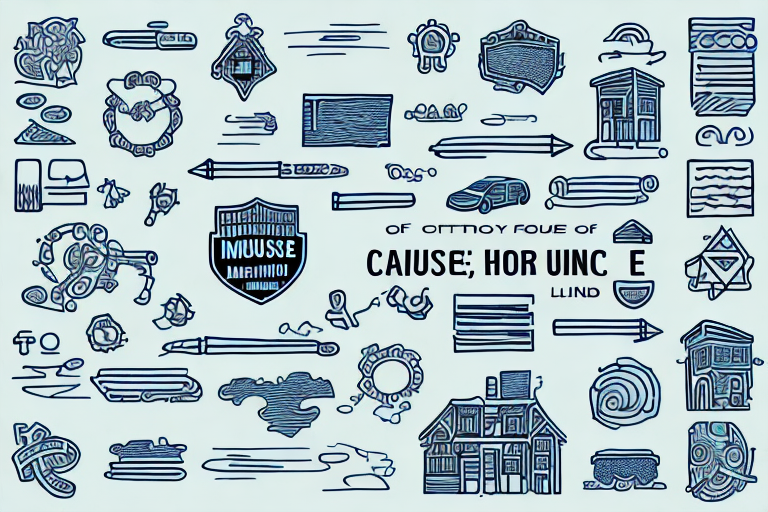Understanding Insurance Coverage Limitations
Insurance is essential for safeguarding your assets against unforeseen events. However, it's crucial to recognize that not all items are covered under standard insurance policies. Understanding the limitations and fine print of your policy ensures you know what is and isn't protected.
Deductibles and Their Impact
A deductible is the amount you must pay out of pocket before your insurance coverage activates. For example, with a $500 deductible, a $1,000 claim would require you to pay the first $500, leaving the insurer to cover the remaining $500. Knowing your deductible helps you assess how it affects your overall coverage.
Coverage Periods
Insurance policies are valid for specific periods. Filing a claim outside this timeframe may result in denial. Regularly reviewing and renewing your policy ensures continuous protection. According to the Insurance Information Institute, understanding coverage periods can prevent unexpected gaps in protection.
Why Certain Items Cannot Be Insured
Several factors determine why specific items are excluded from insurance coverage. These exclusions help insurers manage risk and maintain affordable premiums for policyholders.
High-Risk Items
Items deemed high-risk due to their value or susceptibility to damage or theft, such as jewelry, fine art, and cash, are often excluded from standard policies. The National Association of Insurance Commissioners highlights that specialized policies are available for these valuables.
Illegal or Unlawful Items
Possessing items related to illegal activities, such as weapons or substances, disqualifies them from insurance coverage. Policies cannot protect assets involved in illegal endeavors, as indicated by legal guidelines and insurer policies.
Sentimental Items
Items with significant emotional value but no monetary worth, like family heirlooms or personal mementos, are typically not insurable unless they have documented value. Assessing the importance of such items can guide decisions on obtaining specialized coverage.
Assessing Risk: Factors That Determine Insurability
Insurers evaluate several factors to determine the insurability of an item or property. These assessments help in setting premiums and deciding coverage eligibility.
Value of the Item
The monetary value of an item plays a significant role. Higher-value items may require additional documentation or specialized insurance to ensure adequate coverage.
Location-Based Risks
Geographical factors, such as crime rates or susceptibility to natural disasters, influence insurability. For instance, properties in hurricane-prone areas may face higher premiums due to increased risk.
Owner’s Insurance History
A history of frequent claims or losses can impact insurability. Insurers may view such patterns as indicators of higher risk, potentially leading to higher premiums or denial of coverage.
Alternatives to Traditional Insurance for High-Risk Items
For items that are challenging to insure through conventional policies, there are alternative strategies to ensure their protection.
Specialized Insurance Policies
Obtaining separate insurance for high-value items like art, jewelry, or collectibles provides tailored coverage. Companies such as Chubb specialize in insuring valuable possessions.
Self-Insurance
Setting aside funds to cover potential losses is a viable option for some. This method requires disciplined financial planning but can be cost-effective over time.
Purchase Protection Plans
Some credit cards offer purchase protection for items bought using the card, covering loss, theft, or damage within a specified period. Reviewing your credit card benefits can uncover additional layers of protection.
Implementing Security Measures
Enhancing security through systems like alarms, surveillance cameras, and secure storage can mitigate risks and reduce the likelihood of loss or damage. The FBI emphasizes the effectiveness of robust security in deterring property crimes.
Understanding the Cost of Uninsured Losses
Uninsured losses can lead to significant financial burdens. It's essential to evaluate the potential costs associated with losing uninsured items to make informed decisions about coverage.
Replacement Costs
The expense of replacing valuable items can be substantial. Without insurance, individuals must bear these costs independently, which can strain personal finances.
Legal and Medical Expenses
Uninsured property damage or injuries can result in unexpected legal or medical bills. Liability claims arising from accidents can be particularly costly without adequate coverage.
Emotional and Psychological Impact
The loss of sentimental items, while not always financially quantifiable, can have significant emotional repercussions. Proper documentation and preventive measures can alleviate some of these impacts.
Properly Documenting Uninsurable Items
In the event of loss or damage to uninsured items, proper documentation is crucial for mitigating financial and emotional impacts.
Creating an Inventory
Maintain a detailed inventory of valuable items, including descriptions, purchase dates, and costs. Utilizing tools like inventory templates can streamline this process.
Photographic Evidence
Photographs or videos of items provide visual proof of ownership and condition. This documentation is invaluable when filing claims or proving ownership.
Secure Documentation Storage
Store receipts, appraisals, and other relevant documents in a safe and easily accessible location. Digital backups on secure cloud services ensure information is preserved even in adverse events.
In summary, while insurance is a vital tool for protecting assets, it's important to understand its limitations. By assessing risks, exploring alternative protection methods, and maintaining thorough documentation, individuals can effectively safeguard both their financial and sentimental interests.
Regularly reviewing and updating your insurance policies, along with your personal inventory, ensures that you remain adequately protected against evolving risks and asset values.








